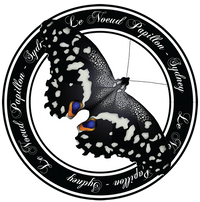The History Of Bow Ties
A Brief History Of The Origins Of Neckwear
The modern day neck tie and bow tie have a long history - some say that the first known examples of neckties are on the unearthed statues in China of "The Terracotta Army Of The First Emperor Of China" circa 221BC. Cloth has been used around the neck and other parts of the human anatomy for centuries to signal things such as tribe, battle groups or social ranking.

Portrait of a Croatian Mercenary From The Thirty Years War
Cloth around men's necks is nothing new to Western culture too. It can be traced back to the Romans who used cloth to define military groups circa 101 BC. However, it is widely accepted that modern menswear neckties and bow ties stem from Croatian mercenaries employed by the French during the battle of the Thirty Years War (1618–1648). These men from the Croatian Military Frontier wearing small knotted neckerchiefs were known for their bravery and were highly regarded as warriors, wearing their neck wear into battle. Around about the same time was the introduction of the cardboard collar for shirts. Until then men of society wore ruffs made of lace fabric which used up to 15 metres of fabric and were very costly to make. The French upper class were quick to adopt the trend they saw on their Croatian friends but it was still not accepted dress at court until the boy-king Louis XIV (1638 - 1715) succeeded as king of France and began wearing a lace cravat around 1646. Within one year of Louis' adoption of the cravat the English were enamoured and Kings Charles II sent orders to Venice for lace so that he might adopt the trend. At this stage most cravats in lace were white. A variation of these neck ties is still worn by judges and they are known as jabots.

King Louis XIV ... The 'earliest adopter' of neckwear as we understand it today.
Neckwear remained in this manner for some time - mostly in black and white laces. Beau Brummel (1778 - 1840) changed this to some extent when he began championing new knots for neck wear and in doing so managed to convince the Prince Of Wales to adopt those changes.In the 19th Century the weaving machines making fabrics began to produce more coloured fabrics and clubs, societies, military, sports and hunting groups would use colours and stripes to identify themselves. By the middle of 19th century the number of neckties and variations as well as the number of knots that were being employed gave way to the modern 'bow tie' as we know it today. By now we also see the beginning of the modern long neck tie.The modern long neck tie as we know it today was first implemented by Jesse Langsdorf (from New York) in 1926 when he came up with a method for cutting tie fabric on the bias ( cloth is made up of warp and weft, the bias is the 45 degree cutting of fabric which gives more flexibility to cut cloth) and sewing the tie into three parts giving great elasticity and allowing the tie to return to it's original shape after being knotted. An improvement on this technique was added in the late 1920's when a Richard Atkinson of Belfast added what is known as a slip stitch down the centre of the tie to both allow the silk to return to the line of the stitch and to fasten an interlining to the inside of the tie to give greater structure to the tie and to allow less fabric to be used in the making of the tie.
(Did you know that the four in hand knot is said to come from the English nickname "four-in-hand" for a carriage which had four horses and one driver? A club was formed called the The Four In Hand Driving Company in 1856 and that the carriage drivers of those clubs used to knot the reins of the horses with a knot which was what we today call a "four-in-hand")
So, when you knot your next tie or bow tie consider for a moment all that wonderful history that is wrapped up in that one bit of cloth from the first Croatian mercenaries of the 17th Century to King Louis XIV of France, Beau Brummel, The Duke Of Windsor, Jesse Langsdorf and Richard Atkinson and every chap that has worn a ruff, jabot, cravat, tie, ascot, bandanna, neckerchief and bow tie along the way.
